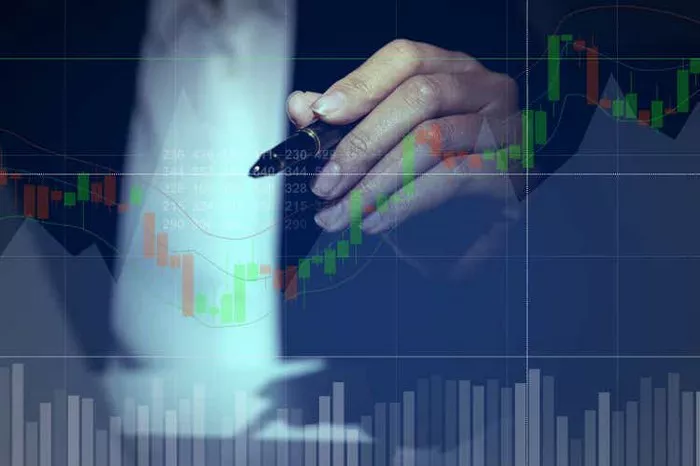Futures markets play a vital role in global finance, providing a platform for traders to buy and sell contracts for various commodities, financial instruments, and market indices. Understanding the factors that influence futures prices is crucial for traders seeking to navigate these dynamic markets successfully. In this article, we’ll explore the key factors that affect futures prices, encompassing both fundamental and technical influences that drive price movements in futures markets.
Supply and Demand Dynamics
Supply and demand dynamics are fundamental drivers of futures prices, influencing market sentiment and price trends. Changes in supply and demand fundamentals for underlying commodities or financial instruments can exert significant pressure on futures prices. For example, disruptions in supply due to adverse weather conditions, geopolitical tensions, or production constraints can lead to supply shortages and price spikes in commodity futures markets. Similarly, shifts in demand patterns driven by changes in consumer preferences, economic growth, or industrial activity can impact futures prices, reflecting the underlying fundamentals of supply and demand.
Macroeconomic Factors
Macroeconomic factors play a crucial role in shaping futures prices, as they reflect broader economic trends and conditions that impact market sentiment and investor behavior. Key macroeconomic indicators such as GDP growth, inflation rates, interest rates, and unemployment figures can influence futures prices across various asset classes. For instance, expectations of robust economic growth may drive demand for commodities such as oil, metals, and agricultural products, leading to higher futures prices. Conversely, concerns about economic recession or stagflation may dampen demand and suppress futures prices as investors seek safe-haven assets or reduce exposure to riskier investments.
Geopolitical Events
Geopolitical events and developments on the global stage can have a profound impact on futures prices, creating uncertainty and volatility in markets. Political instability, armed conflicts, trade disputes, sanctions, and geopolitical tensions can disrupt supply chains, disrupt production, and escalate risk premiums, affecting futures prices for affected commodities and financial instruments. Traders closely monitor geopolitical developments and geopolitical risk indicators to assess potential risks and opportunities in futures markets, adjusting their trading strategies accordingly to navigate geopolitical uncertainties effectively.
Weather Patterns and Natural Disasters
Weather patterns and natural disasters can significantly influence futures prices for agricultural commodities, energy products, and other weather-sensitive assets. Adverse weather conditions such as droughts, floods, hurricanes, and wildfires can damage crops, disrupt supply chains, and impact production levels, leading to price volatility in agricultural futures markets. Similarly, extreme weather events can disrupt energy infrastructure, disrupt oil and gas production, and affect transportation networks, contributing to price fluctuations in energy futures markets. Traders monitor weather forecasts and seasonal patterns to anticipate potential supply disruptions and price movements in weather-sensitive futures markets.
Technological Advancements
Technological advancements and innovations in trading technology have transformed futures markets, enabling faster execution, greater transparency, and enhanced liquidity. Electronic trading platforms, algorithmic trading systems, high-frequency trading (HFT), and artificial intelligence (AI) algorithms have revolutionized the way futures contracts are traded and priced. These technological advancements have increased market efficiency, reduced trading costs, and improved price discovery mechanisms, influencing futures prices by facilitating faster information dissemination, greater market participation, and more efficient order execution.
Market Sentiment and Investor Psychology
Market sentiment and investor psychology play a crucial role in determining futures prices, as they reflect the collective beliefs, attitudes, and emotions of market participants. Positive sentiment driven by optimism, confidence, and risk appetite can fuel bullish trends and push futures prices higher, while negative sentiment fueled by fear, uncertainty, and pessimism can trigger bearish trends and push prices lower. Traders analyze market sentiment indicators such as investor surveys, sentiment indices, and trading volumes to gauge market sentiment and sentiment shifts, adjusting their trading strategies accordingly to capitalize on prevailing market sentiment or anticipate sentiment reversals.
Regulatory Changes and Policy Decisions
Regulatory changes and policy decisions can have significant implications for futures markets, affecting trading rules, margin requirements, position limits, and market structure. Government regulations, central bank policies, and regulatory announcements can influence futures prices by altering market conditions, liquidity levels, and risk profiles. For example, changes in monetary policy, interest rate decisions, and fiscal stimulus measures can impact currency futures, interest rate futures, and equity index futures, affecting price movements and trading patterns. Traders closely monitor regulatory developments and policy decisions to assess their potential impact on futures markets and adjust their trading strategies accordingly.
Global Economic Trends and Market Developments
Global economic trends and market developments can shape futures prices by influencing investor behavior, risk appetite, and capital flows across global markets. Factors such as economic growth prospects, trade dynamics, currency movements, and capital market trends can impact futures prices for various asset classes and market indices. For instance, strong economic growth in emerging markets may drive demand for commodities and industrial products, boosting futures prices in commodity futures markets. Conversely, global economic slowdowns or recessions may dampen demand and suppress prices across futures markets as investors adopt a risk-off stance and seek safe-haven assets.
Conclusion
In conclusion, futures prices are influenced by a complex interplay of factors ranging from supply and demand dynamics to macroeconomic trends, geopolitical events, weather patterns, technological advancements, market sentiment, regulatory changes, and global economic developments. Traders must analyze and interpret these factors comprehensively to understand the underlying drivers of futures prices and anticipate potential price movements in futures markets. By staying informed, conducting thorough research, and employing sound trading strategies, traders can navigate futures markets effectively and capitalize on opportunities in dynamic and ever-changing market environments.


